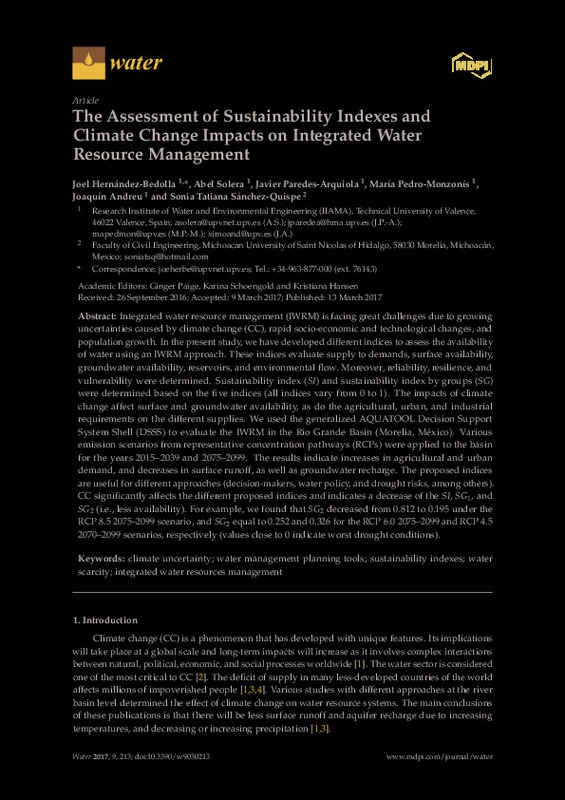JavaScript is disabled for your browser. Some features of this site may not work without it.
Buscar en RiuNet
Listar
Mi cuenta
Estadísticas
Ayuda RiuNet
Admin. UPV
The Assessment of Sustainability Indexes and Climate Change Impacts on Integrated Water Resource Management
Mostrar el registro completo del ítem
Hernández-Bedolla, J.; Solera Solera, A.; Paredes Arquiola, J.; Pedro Monzonis, M.; Andreu Álvarez, J.; Sánchez-Quispe, ST. (2017). The Assessment of Sustainability Indexes and Climate Change Impacts on Integrated Water Resource Management. Water. 9(3). https://doi.org/10.3390/w9030213
Por favor, use este identificador para citar o enlazar este ítem: http://hdl.handle.net/10251/202982
Ficheros en el ítem
Metadatos del ítem
| Título: | The Assessment of Sustainability Indexes and Climate Change Impacts on Integrated Water Resource Management | |
| Autor: | Hernández-Bedolla, Joel Sánchez-Quispe, Sonia Tatiana | |
| Entidad UPV: |
|
|
| Fecha difusión: |
|
|
| Resumen: |
[EN] Integrated water resource management (IWRM) is facing great challenges due to growing uncertainties caused by climate change (CC), rapid socio-economic and technological changes, and population growth. In the present ...[+]
|
|
| Palabras clave: |
|
|
| Derechos de uso: | Reconocimiento (by) | |
| Fuente: |
|
|
| DOI: |
|
|
| Editorial: |
|
|
| Versión del editor: | https://doi.org/10.3390/w9030213 | |
| Código del Proyecto: |
|
|
| Agradecimientos: |
I would like to express our gratitude to the National Council of Science and Technology of Mexico (CONACYT) and Secretary of Public Education (SEP) for their financial support. I would also wish to thank the Research ...[+]
|
|
| Tipo: |
|









